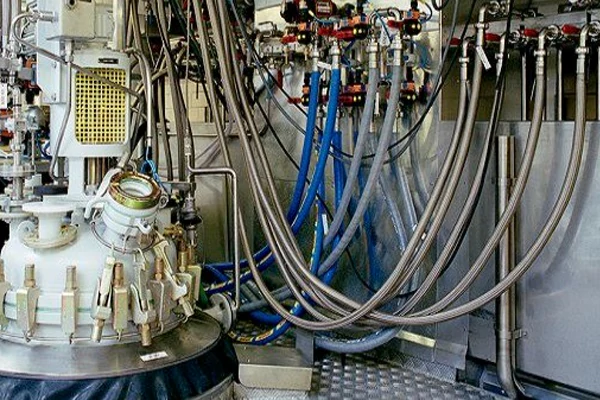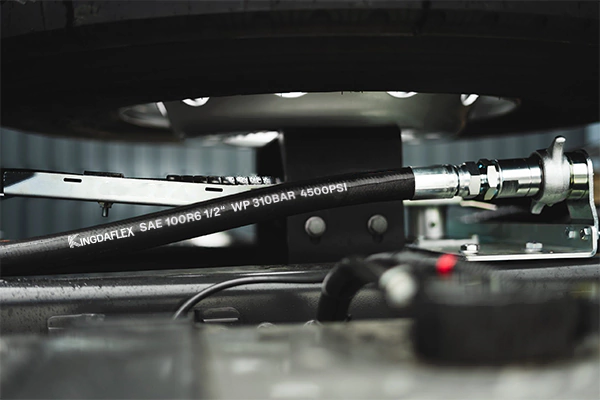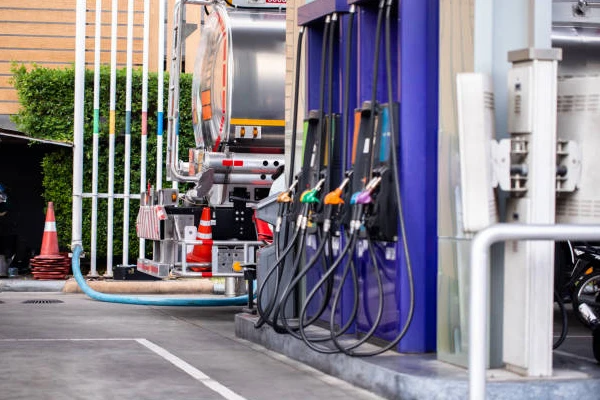In industries ranging from agriculture to manufacturing, the safe and efficient transfer of chemicals is paramount. A critical component in this process is the chemical spray hose, but selecting the right one can be complex. Understanding which hose materials can withstand specific chemicals is not just about performance; it’s about preventing dangerous leaks, equipment damage, and ensuring the safety of your team and the environment.
This guide, centered around the essential Hose Chemical Compatibility Chart, will equip you with the knowledge to make informed decisions. We’ll explore why compatibility is key, how to interpret these vital charts, and ultimately, ensure your chemical transfer operations are as safe and effective as possible.
What is Hose Chemical Compatibility?
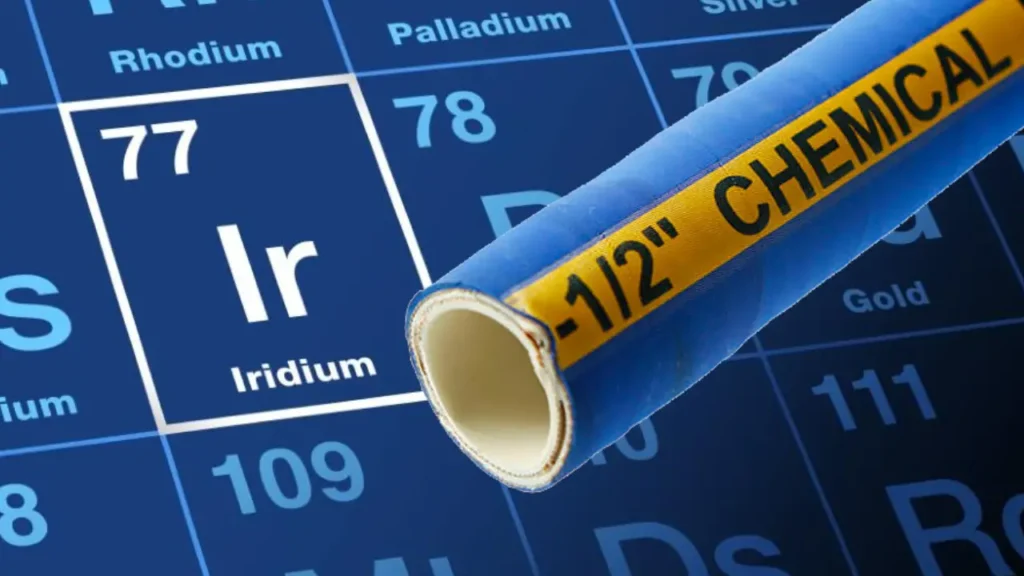
Hose chemical compatibility refers to the ability of a hose material to withstand the chemical properties of the fluid it is designed to transfer, without degrading or experiencing adverse reactions. This compatibility is crucial because different chemicals can cause various types of damage to incompatible hose materials, such as swelling, cracking, hardening, softening, or even complete dissolution.
Factors like the chemical’s concentration, temperature, and exposure time significantly influence this compatibility. Ensuring chemical compatibility is paramount for operational safety, preventing leaks, maintaining hose integrity, and extending the lifespan of the hose and the entire spray system.
Hose Chemical Compatibility Factors
Hose chemical compatibility is influenced by several critical factors beyond just the chemical’s name. These variables determine how effectively and safely a hose will perform when exposed to a specific substance over time, and all must be considered to prevent premature hose failure, leaks, and potential hazards.
- Chemical Concentration: The strength or dilution of a chemical directly impacts its aggressiveness. A hose compatible with a diluted solution might degrade rapidly when exposed to a higher concentration of the same chemical.
- Temperature of the Media: Elevated temperatures significantly increase the reactivity of chemicals and can cause hose materials to soften, swell, or otherwise degrade more quickly, even if they are compatible at room temperature.
- Operating Pressure: High pressure can exacerbate the effects of chemical incompatibility, stressing the hose material and potentially leading to faster permeation or rupture if the material’s integrity is compromised by the chemical.
- Duration of Exposure: Continuous or prolonged exposure to a chemical will have a greater deteriorating effect on a hose material compared to intermittent or short-term contact.
- Chemical Purity/Mixtures: The presence of impurities or the mixing of different chemicals can create synergistic reactions that are more aggressive than individual components, leading to unexpected compatibility issues.
- Service Conditions (Static vs. Flexing): A hose that performs well in a static application might fail quickly if it is constantly subjected to flexing, bending, or vibration while conveying an incompatible chemical, as this adds mechanical stress to chemical degradation.
Rubber Hose Chemical Compatibility Chart
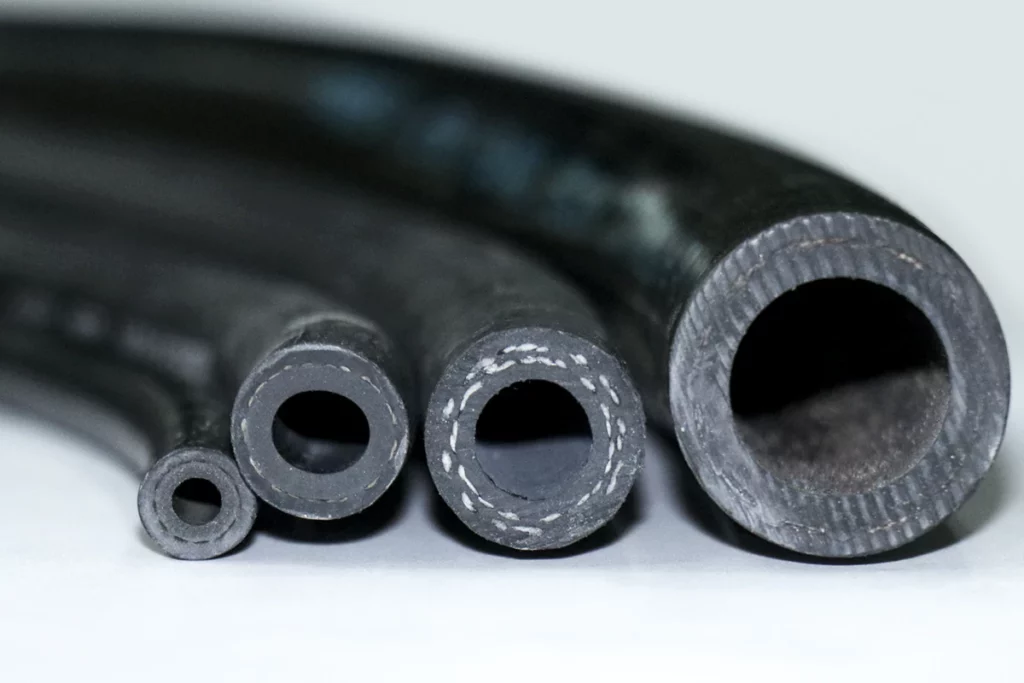
A rubber hose chemical compatibility Chart is a specialized reference tool that outlines the resistance of various rubber compounds to different chemical substances. Rubber, or elastomers, possess unique properties like flexibility and elasticity, making them ideal for many hose applications. However, not all rubber types react the same way to chemicals; some may swell, harden, soften, or degrade entirely.
This rubber hose chemical compatibility chart helps users select the appropriate rubber material for a hose’s inner tube or outer cover, ensuring safe, long-lasting performance when exposed to specific acids, bases, solvents, oils, and other media, taking into account factors like concentration and temperature.
Here are key aspects typically found in such a chart:
- Elastomer Types: Lists common rubber materials like EPDM, Nitrile (NBR), Neoprene (CR), Viton (FKM), Butyl (IIR), Natural Rubber (NR), Silicone (VMQ), etc.
- Chemical List: Provides a comprehensive list of various chemicals, including acids, bases, alcohols, hydrocarbons, solvents, and specialized industrial fluids.
- Resistance Ratings: Uses a standardized rating system (e.g., A=Excellent, B=Good, C=Fair/Conditional, X=Unsatisfactory, -=No Data) to indicate how each elastomer performs when exposed to a specific chemical.
- Conditions: Often includes footnotes or separate columns indicating how factors like temperature and concentration can affect compatibility.
Example Rubber Hose Chemical Compatibility Chart (Simplified)
| Chemical | EPDM (Ethylene Propylene Diene Monomer) | Nitrile (NBR/Buna-N) | Neoprene (CR) | Viton (FKM) | Natural Rubber (NR) |
| Acetic Acid (Dilute) | A | B | B | A | B |
| Acetone | A | X | X | A | X |
| Ammonia (Aqueous) | A | B | B | A | A |
| Gasoline | X | A | B | A | X |
| Hydrochloric Acid | A | B | C | A | B |
| Mineral Oil | X | A | A | A | X |
| Ozone | A | X | A | A | X |
| Sodium Hydroxide | A | B | B | A | B |
| Toluene | X | C | X | A | X |
| Water | A | A | A | A | A |
Legend:
- A = Excellent: Suitable for continuous use.
- B = Good: Minor effects, generally suitable.
- C = Fair/Conditional: Moderate effects, suitability depends on specific conditions (temp, concentration, duration). Test before use.
- X = Unsatisfactory: Not recommended for use.
- – = No Data: Insufficient data or not typically used.
Steel Hose Chemical Compatibility Chart
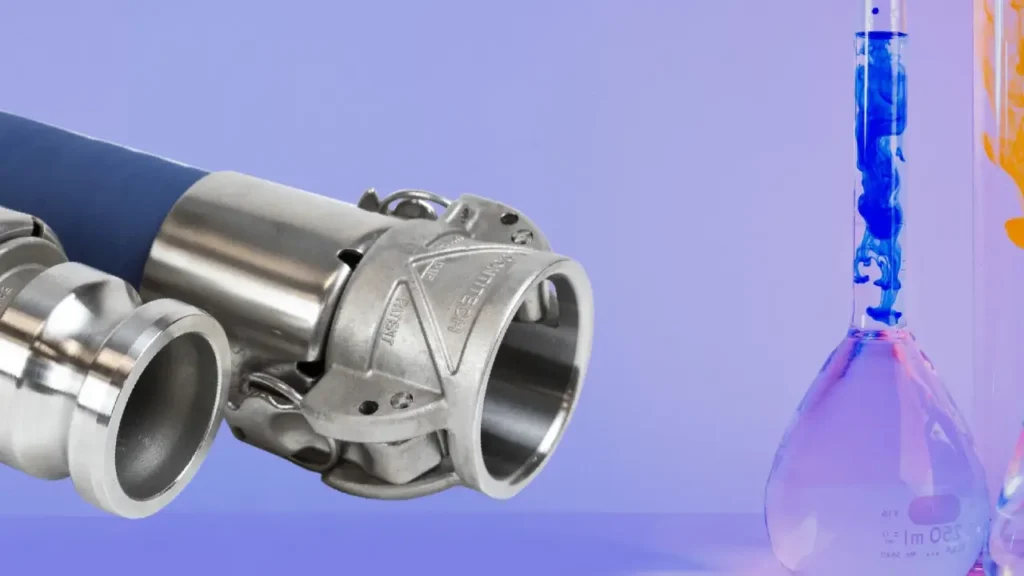
A Steel Hose Chemical Compatibility Chart is a crucial reference specifically for hoses made from various grades of stainless steel or other metallic alloys. Unlike rubber or plastic hoses, steel hoses, particularly those with corrugated or braided designs, are chosen for extreme conditions involving high temperatures, pressures, or highly aggressive chemicals that would rapidly degrade other materials.
This steel hose chemical compatibility chart details how different steel alloys (e.g., 304, 316, 316L stainless steel, Hastelloy, Monel) react to a wide array of chemicals, considering factors like concentration, temperature, and the potential for corrosion, pitting, or stress cracking, ensuring the selection of a robust and safe solution for critical chemical transfer applications.
Here are key aspects typically found in such a chart:
- Steel Alloys: Lists specific grades of stainless steel (e.g., 304 SS, 316 SS, 316L SS) and other relevant metallic alloys.
- Chemical List: Comprehensive list of chemicals, including strong acids, bases, solvents, halogenated compounds, and high-temperature fluids.
- Resistance Ratings: Uses a rating system (e.g., Excellent, Good, Fair, Not Recommended) to indicate the alloy’s performance against each chemical. Some charts may also include a corrosion rate in mils or millimeters per year.
- Temperature and Concentration: Critical variables impacting steel’s chemical resistance. Charts often specify the maximum temperature and concentration for which a particular rating applies.
- Specific Corrosion Types: May highlight susceptibility to specific corrosion mechanisms like pitting, crevice corrosion, intergranular corrosion, or stress corrosion cracking for certain chemical/alloy combinations.
Example Steel Hose Chemical Compatibility Chart (Simplified)
| Chemical | 304 Stainless Steel (SS) | 316 Stainless Steel (SS) | 316L Stainless Steel (SS) |
| Acetic Acid (Glacial) | C | B | B |
| Acetone | A | A | A |
| Ammonia (Aqueous) | A | A | A |
| Bromine (Dry) | X | X | X |
| Chlorine (Dry Gas) | X | C | C |
| Hydrochloric Acid (Dil.) | D | D | D |
| Nitric Acid (Conc.) | B | A | A |
| Sodium Hydroxide | A | A | A |
| Sulfuric Acid (Dilute) | C | B | B |
| Water | A | A | A |
Legend:
- A = Excellent: Highly resistant, suitable for continuous use. (Corrosion rate typically < 2 mils/year)
- B = Good: Minor effects, generally suitable. (Corrosion rate typically < 20 mils/year)
- D = Severe Effect: Not recommended. Significant corrosion or degradation expected.
- X = Unsatisfactory: Not suitable for any use with this chemical.
PVC Hose Chemical Compatibility Chart
A PVC (Polyvinyl Chloride) Hose Chemical Compatibility Chart is a vital tool for determining the suitability of PVC hoses for various chemical transfer applications. PVC is a widely used material for flexible hoses due to its versatility, affordability, and good resistance to many common chemicals. However, PVC’s resistance can vary significantly depending on the specific chemical’s concentration, temperature, and exposure duration.
This PVC hose chemical compatibility chart helps users identify whether a PVC hose will safely and effectively handle a particular fluid, preventing issues like softening, swelling, hardening, or chemical degradation that can lead to hose failure and safety hazards.
Here are key aspects typically found in such a chart:
- PVC Types: While often just “PVC,” some charts may differentiate between plasticized (flexible) and unplasticized (rigid) PVC, as the presence of plasticizers can affect chemical resistance, particularly to solvents.
- Chemical List: Provides an extensive list of chemicals, including various acids, alkalis, salts, alcohols, and some oils.
- Resistance Ratings: Uses a rating system (e.g., A=Excellent, B=Good, C=Fair, D=Severe Effect, X=Not Recommended) to indicate the degree of resistance of PVC to each chemical.
- Concentration and Temperature: Crucial variables for PVC. Charts often specify the concentration of the chemical and the temperature at which the compatibility rating applies, as PVC’s resistance decreases significantly at higher temperatures or with higher concentrations of certain chemicals.
- Common Incompatibilities: PVC is generally not recommended for use with ketones (like acetone, MEK), esters, aromatic hydrocarbons (like benzene, toluene), or chlorinated hydrocarbons (like carbon tetrachloride, chloroform), as these can cause significant swelling and degradation.
Example PVC Hose Chemical Compatibility Chart (Simplified)
| Chemical | PVC (Polyvinyl Chloride) | Conditions (Typical) |
| Acetic Acid (10%) | A | 20°C / 68°F |
| Acetic Acid (Glacial) | C | 20°C / 68°F |
| Acetone | X | Any |
| Ammonia (Aqueous) | A | 20°C / 68°F |
| Benzene | D | 20°C / 68°F |
| Chlorine (Dry Gas) | B | 20°C / 68°F |
| Chlorine (Wet Gas) | C | 20°C / 68°F |
| Diesel Oil | B | 20°C / 68°F |
| Ethanol (Ethyl Alcohol) | C | 20°C / 68°F |
| Hydrochloric Acid (20%) | A | 20°C / 68°F |
| Hydrochloric Acid (Conc.) | C | 20°C / 68°F |
| Kerosene | B | 20°C / 68°F |
| Methyl Ethyl Ketone (MEK) | X | Any |
| Mineral Oil | A | 20°C / 68°F |
| Nitric Acid (10%) | A | 20°C / 68°F |
| Nitric Acid (40%) | B | 20°C / 68°F |
| Sodium Hydroxide (50%) | A | 20°C / 68°F |
| Sulfuric Acid (20%) | A | 20°C / 68°F |
| Sulfuric Acid (98%) | D | 20°C / 68°F |
| Toluene | D | 20°C / 68°F |
| Water | A | Any |
Nitric Acid Hose Chemical Compatibility Chart
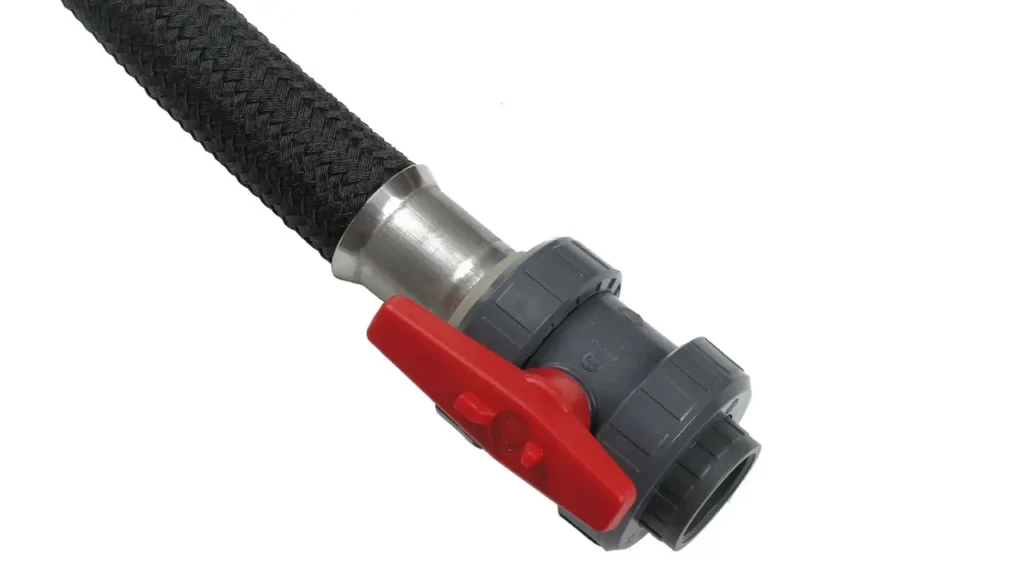
A nitric acid hose chemical compatibility chart is a highly specialized and critical reference, as nitric acid (HNO₃) is an extremely corrosive and oxidizing agent that can rapidly degrade many common hose materials. This chart focuses specifically on which materials can safely handle various concentrations and temperatures of nitric acid, from dilute solutions to fuming concentrations.
Selecting the correct hose is paramount for preventing catastrophic failures, protecting personnel, and avoiding environmental contamination, given nitric acid’s strong oxidizing properties and its ability to cause severe burns and generate toxic fumes. The nitric acid hose chemical compatibility chart will detail the resistance of high-performance plastics (like PTFE) and specific stainless steel alloys, as standard rubbers or PVC would often be unsuitable.
Here are key aspects typically found in such a chart:
- Hose Lining Materials: Focuses on the inner tube material directly contacting the nitric acid, such as PTFE (Polytetrafluoroethylene), specific grades of UHMWPE (Ultra-High Molecular Weight Polyethylene), and certain fluoropolymers.
- Concentration of Nitric Acid: Nitric acid’s corrosivity varies dramatically with concentration. Charts will provide separate ratings for dilute (e.g., <10%), moderate (e.g., 20-60%), and concentrated/fuming (>60% or 90%) solutions.
- Temperature: Temperature significantly accelerates chemical reactions. A material that is compatible with nitric acid at room temperature might quickly fail at elevated temperatures. Charts will specify the maximum safe operating temperature for each concentration.
- Reinforcement and Cover Materials: While the liner is key, the hose’s reinforcement (e.g., stainless steel braids) and outer cover must also be resistant to incidental contact or fumes, and capable of handling the operational pressure and temperature.
- Fitting Materials: Information on compatible fitting materials (e.g., 316L Stainless Steel, Hastelloy) is crucial, as an incompatible fitting can be a point of failure even if the hose material is suitable.
Example Nitric Acid Hose Chemical Compatibility Chart (Simplified)
| Chemical | PTFE (Polytetrafluoroethylene) | 316L Stainless Steel | EPDM (Ethylene Propylene Diene Monomer) | PVC (Polyvinyl Chloride) |
| Nitric Acid (10%) | A | A | C | C |
| Nitric Acid (40%) | A | B | X | D |
| Nitric Acid (60%) | A | C | X | X |
| Nitric Acid (>70%, Fuming) | A | D | X | X |
Chemical Compatibility Chart for Storage
A Chemical Compatibility Chart for Storage is an essential safety tool, particularly for warehouses, laboratories, and industrial facilities that handle and store various chemicals. Unlike hose compatibility, which focuses on flow, storage compatibility addresses the safe co-location of different substances to prevent dangerous reactions, fires, explosions, or the degradation of containers.
This chemical compatibility chart for storage details which chemicals can be safely stored near each other, which require isolation, and what specific storage conditions (e.g., ventilation, temperature) are necessary, based on their reactivity, flammability, corrosivity, and other hazardous properties. Its primary purpose is to mitigate risks associated with accidental spills, leaks, or container breaches.
Here are key aspects typically found in such a chart:
- Chemical Classes/Groups: Chemicals are grouped by their primary hazards (e.g., Acids, Bases, Oxidizers, Flammables, Corrosives, Water Reactives, Toxins). This is crucial because storage compatibility is often based on reactive classes rather than individual chemicals.
- Compatibility Matrix: The core of the chart, typically a grid, showing how different chemical classes interact when stored in proximity. It uses a rating system to indicate safe co-storage, requiring segregation, or strict isolation.
- Storage Recommendations: Provides general guidelines for each class, such as “store in a cool, dry place,” “segregate from combustibles,” “store in a ventilated area,” or “store in a corrosive-resistant cabinet.”
- Specific Incompatibilities: May highlight particular individual chemicals within a class that have highly dangerous reactions with others (e.g., perchloric acid and organic materials).
- Ventilation Requirements: Indicates if a specific chemical or group requires forced ventilation to prevent the buildup of hazardous vapors.
- Container Material Compatibility: Sometimes includes information on appropriate container materials (e.g., glass, polyethylene, stainless steel) for various chemicals to prevent container degradation.
Example Chemical Compatibility Chart for Storage (Simplified – Hazard Class Based)
| Hazard Class | Acids (Mineral) | Bases (Caustics) | Flammables | Oxidizers | Water Reactives | Corrosives | Toxins |
| Acids (Mineral) | Safe | Segregate | Isolate | Isolate | Isolate | Segregate | Segregate |
| Bases (Caustics) | Segregate | Safe | Segregate | Segregate | Isolate | Segregate | Segregate |
| Flammables | Isolate | Segregate | Safe | Isolate | Segregate | Isolate | Segregate |
| Oxidizers | Isolate | Segregate | Isolate | Safe | Isolate | Segregate | Segregate |
| Water Reactives | Isolate | Isolate | Segregate | Isolate | Safe | Isolate | Isolate |
| Corrosives | Segregate | Segregate | Isolate | Segregate | Isolate | Safe | Segregate |
| Toxins | Segregate | Segregate | Segregate | Segregate | Isolate | Segregate | Safe |
Legend for Compatibility:
- Safe: Can be stored in the same general area, maintaining recommended distances or using secondary containment.
- Segregate: Store in a separate cabinet, room, or area, or use physical barriers to prevent mixing in case of spill.
- Isolate: Store in a completely separate and dedicated area, often with specific ventilation and fire suppression, and potentially its own building.
Conclusion
Ultimately, mastering your Hose Chemical Compatibility Chart is not merely a recommendation; it’s a fundamental requirement for any operation involving chemical transfer. This essential tool empowers you to select the precise hose material that will reliably withstand the specific chemicals, temperatures, and pressures of your application, significantly mitigating risks and extending the lifespan of your equipment.
Prioritizing chemical compatibility safeguards your personnel from hazardous exposures, protects the environment from contamination, and prevents costly equipment failures or product loss. By consistently referencing and applying the insights from these charts, you build a foundation of safety and efficiency that benefits your entire operation.
For all your wholesale chemical hose needs, trust Kingdaflex. We offer a comprehensive range of high-quality chemical hoses, expertly designed for various applications and chemistries. Partner with Kingdaflex to ensure you always have the right hose for the job, guaranteeing safe, reliable, and long-lasting performance in all your chemical transfer processes.


